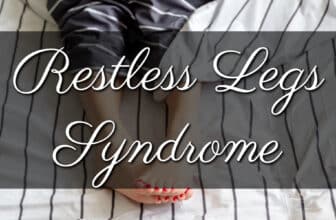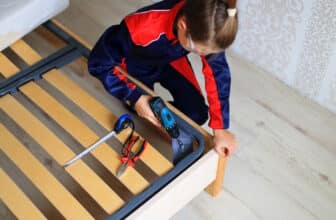When it comes to cleaning your house regularly, you mustn’t skip out on your mattress. Believe it or not, mattresses can hold a lot of dust mites, dirt, and bacteria. To keep your mattress clean, regular maintenance is strongly advised. Otherwise, there could be a buildup of bacteria and debris which isn’t healthy.
As any cleaning tips go, it’s primarily essential to get rid of all those hidden and unwanted deposits. The mattress is one of the last places you’d expect to find a multitude of dirt, especially when it’s covered with sheets. Sadly, even if you have taken preventive measures such as using an antimicrobial or dust mites repellent mattress cover, germs will still find ways to sneak into your bed.
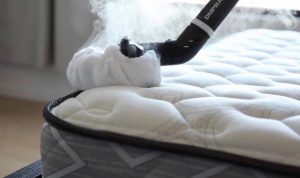
That’s because, over time, the body releases sweat, sheds dead skin cells, and some hair strands fall off. Any particles smaller than your sheet’s thread can get into your mattress and start to accumulate. Plus, different microorganisms may begin to grow, and debris can get stuck in-between your mattress and boxspring. To help you deal with this problem, we’re giving you one proven solution to clean your mattress. In this article, we will be teaching how you can deep clean a mattress with baking soda and vinegar.
Why Use Natural Cleaners?
One of the main benefits of using a natural solution such as white vinegar and baking soda is that your mattress won’t have any risk of becoming damaged. The fabric on your mattress may be durable, but if harsh chemicals are often applied, you may find it starting to wear off. Mattresses aren’t cheap and come with a relatively expensive price tag, so wouldn’t you want to make it last as long as you can?
Harsh cleaners may not only cause harm to the fabric layer but may also damage the foam padding underneath. If you’re looking to preserve the foam and shape of your bed, then it’s best to use natural cleansers. This is especially true if you plan to disinfect your bed frequently, as the natural chemicals are safe to use on foams or mattress fabrics.
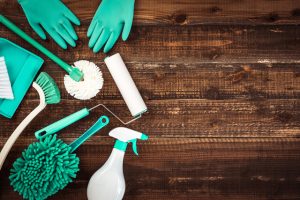
Additionally, detergents or fabric cleaners that you can buy over-the-counter contain toxic chemicals that may harmful to your skin and can cause health problems. If you’ve ever suffered from sensitivities to strong detergents, fabric softeners, or even soaps, you may develop an adverse reaction to fabric cleansers.
That’s why it’s important to use natural solutions as they can help prevent any irritations from occurring. Plus, the last thing you want is to have your bed contaminated with allergy-causing chemicals. If you have young children, pets, or live with others, it’s also best to use baking soda and vinegar. These cleansers don’t pose any threat and can prevent allergic reactions or aren’t as fatal if accidentally consumed.
Additionally, baking soda and vinegar are effective substitutes for many other products on the market, including mildew removers, toilet scrubs, and other cleaning solutions. This is because of the powerful and unique reaction when vinegar and baking soda are mixed together. They create a strong antimicrobial effect, which is perfect for home sanitizing. You may also use the excess solution on dishes, hard surfaces, or to clean the bathroom.
According to a study performed to test alternatives to household cleaners, baking soda and white vinegar were found to be just as efficient in eliminating microbes. This is attributed to vinegar’s high acidity which can kill most microorganisms, whereas baking soda is strong enough to remove dirt or stains. The combination of these two components makes an effective and cheap alternative to other household cleansers.
They work together to destroy bacteria and get rid of any grime that may have clung to your mattress. Lastly, they are inexpensive, easy to make, and will take up less storage space in your home than multiple cleansers.
Step 1. Preparing the Mattress
- The very first step you’ll need to take to clean your mattress is to remove all sheets, blankets, pillows, and the mattress cover. From here, you have two options – either to wash them in the washing machine at 130 degrees Fahrenheit, or you can soak them in vinegar and baking soda solutions mixed with a bit of water.
- To do so, add 1/2 a cup of vinegar to a load or in a bucket and let it sit for at least 30 minutes to kill any remaining bacteria or dust mites. This method is not necessary, but it does get rid of smaller particles that your washer may miss.
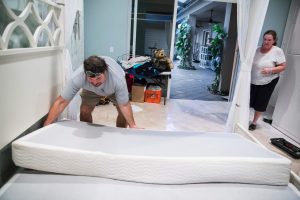
- After this, it’s best to inspect your bed to see how dirt has been accumulated over the years. If it’s your first time, then you’ll likely see a bunch of small stains. Urine stains are pretty common with children’s mattresses. They may be difficult to remove depending on how long they’ve been sitting there.
- If you have a mattress topper, you’re going to need to remove it. Inspect each section before cleaning it according to the factory instructions. It’s essential not to use any chemicals on the foam. Do the same to the box spring under your mattress and check the bottom of the mattress, too.
- If you see any signs of dust mites or bed bugs, you may have a larger problem and need to call pest control. If not, you can continue with our article. After you’ve removed all sections and have inspected where you need to clean, you can begin the process.
Step 2. Removing Stains
- To clean your mattress, start with locating stains. There would always be different sorts of smudges that you’d find on the surface, including urine stains, drink spills, saliva, or even blood stains. To remove these, it’s best to focus on them before you clean your entire mattress, as they take some time to dissolve.
- The first rule is to assess how deep the stains are. If they’ve been left there for a number of years, then it’s likely they will be harder to get rid of. If they are new, then it should only take a few minutes to half an hour to remove the discoloration with a natural cleaning solution.
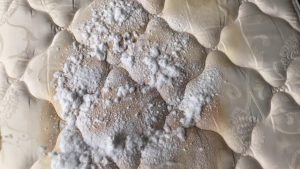
- Now that you’ve found all the stains, it’s time to take them out with our all-natural baking soda and vinegar solution. Prepare the solution by mixing a teaspoon of baking soda with three tablespoons of vinegar. Allow the components to sit for a few minutes before applying them to the surface of the stains.
- Once the mixture is ready, take a dry hand cloth or paper towels and dip it into the mix. After this, dab the stain repeatedly up and down until it starts to fade. This may take a while, depending on how deep the smudge is. If you still can’t get the stain out of the mattress with baking soda and vinegar, we recommend using a more concentrated solution like hydrogen peroxide or bleach to help remove the stain.
- When trying to get the stains out, don’t use any motion other than dabbing. If you do, you will only be pushing the stains deeper into the mattress and spread them around. Instead, try a light dabbing motion that goes up and down. This will help contain the stain while also eliminating it at the same time. This will keep it from spreading and can be more effective at removing blotches that run deep into the mattress.
- If you’ve found any other types of discolorations that come from bodily fluids like urine stains, it’s best to use bleach on the stained area. This ensures that all of the bacteria are removed and won’t continue to grow. To do so, take a towel and dab it on top of the stain. Allow the towel to sit on top of the stain for at least 30 seconds before dabbing it again with a wet hand towel.
- And on a side note, all bodily fluids should be cleaned using cold water instead of hot water. The reason for this is because hot water will set the stain into the mattress and cause a bigger issue. On the other hand, cold water will help release it and make it easier to remove. Once you’ve cleared off the stains, you can begin to clean your mattress entirely.
Step 3. Washing the Mattress
- Now that you’ve removed the smudges, it’s time to move on to cleaning the whole mattress. Mattress cleaning is a bit tricky and may take more than a pair of hands, so be sure to have someone to assist you.
- To clean a mattress, sprinkle baking soda on the surface before letting it sit for around 20-30 minutes. Apply the baking soda on both the top of the mattress and beneath it, as well.
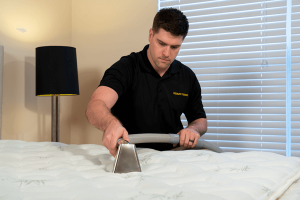
- Baking soda can help eliminate bacteria and get rid of any lingering smell that has built up over time. This includes pet stains, urine odor, or food and drinks. So, any foul odor that you may have noted before will be totally obliterated.
- After the baking soda has settled for half an hour, you will need to use an upholstery cleaner, a vacuum, or even a blow dryer to remove the remaining baking soda from the mattress. Be sure to get to every corner of the bed because baking soda can be irritating if it comes in contact with bare skin. The last thing you want is to feel itchy and swollen from the remnants of these cleansers.
- Additionally, you can also take the mattress outdoors and beat it down with a wooden paddle. This helps shake off any excess debris that may be lying around. This also helps air out the foam and allows fresh breeze to dry your mattress after you wash it. However, this step is not necessary unless you don’t have access to a vacuum cleaner.
- We don’t recommend using the regular attachment to your vacuum, as the force can sometimes tear the fragile fabric on top of your mattress. Some vacuums come with an upholstery attachment, which will be sufficient. If not, there may be an attachment for pet hair, which includes a brush or bristles. This may also be used as a substitute.
How Often Should You Clean Your Mattress?
It depends on several factors. If you’re already taking proper care of the mattress in the first place, then you would only need to do it at least once every six months. However, if the bed has collected stains, dust mites or bugs, and dirt, then you may have to clean it more frequently.
On the other hand, if your bed is older and needs a good cleaning now and then, we’d recommend to wash it at least four times a year. This will help keep your sleeping surface hygienic and prevent allergens from disturbing your sleep.
Although some companies do give detailed information on how to keep your mattress clean, if you’ve purchased an expensive model, they will likely give you the best cleaning tips. Even though our natural solution won’t do much harm, you’ll want to be careful with your bed.
Conclusion
As you can see, there are plenty of methods you can use to clean a mattress. Vinegar and baking soda are just one of them. Honestly, the baking soda and vinegar solution may not be as powerful as your over-the-counter cleansers. However, they do provide effective results for half the price, and these are safe for your kids or pets.
The wide range of use of vinegar and baking soda is also a huge benefit. You can apply it all over your home when you want to disinfect objects. It can be a waste to purchase cleansers for each room. That’s why just having one can help cut down on costs while keeping your house well-sanitized.
Your mattress is where you sleep, relax, and get some much-needed rest. If your bed is covered in dust and microbes, it could pose a health hazard. That’s why we recommend cleaning your mattress with baking soda and vinegar twice a year to inhibit such problems. Hopefully, we’ve helped you understand how you can clean your mattress.



